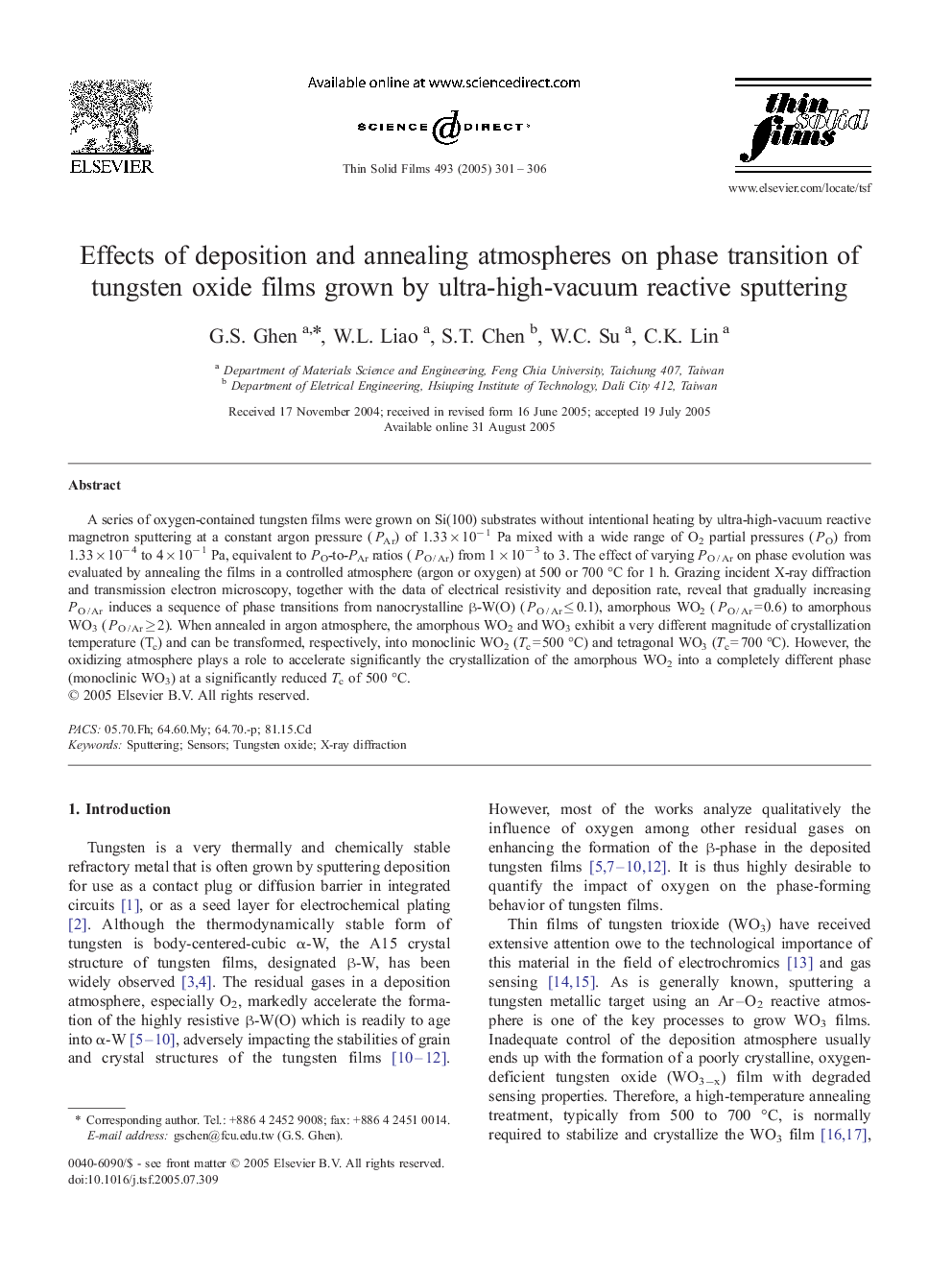| Article ID | Journal | Published Year | Pages | File Type |
|---|---|---|---|---|
| 9812100 | Thin Solid Films | 2005 | 6 Pages |
Abstract
A series of oxygen-contained tungsten films were grown on Si(100) substrates without intentional heating by ultra-high-vacuum reactive magnetron sputtering at a constant argon pressure (PAr) of 1.33 Ã 10â 1 Pa mixed with a wide range of O2 partial pressures (PO) from 1.33 Ã 10â 4 to 4 Ã 10â 1 Pa, equivalent to PO-to-PAr ratios (PO / Ar) from 1 Ã 10â 3 to 3. The effect of varying PO / Ar on phase evolution was evaluated by annealing the films in a controlled atmosphere (argon or oxygen) at 500 or 700 °C for 1 h. Grazing incident X-ray diffraction and transmission electron microscopy, together with the data of electrical resistivity and deposition rate, reveal that gradually increasing PO / Ar induces a sequence of phase transitions from nanocrystalline β-W(O) (PO / Ar â¤Â 0.1), amorphous WO2 (PO / Ar = 0.6) to amorphous WO3 (PO / Ar â¥Â 2). When annealed in argon atmosphere, the amorphous WO2 and WO3 exhibit a very different magnitude of crystallization temperature (Tc) and can be transformed, respectively, into monoclinic WO2 (Tc = 500 °C) and tetragonal WO3 (Tc = 700 °C). However, the oxidizing atmosphere plays a role to accelerate significantly the crystallization of the amorphous WO2 into a completely different phase (monoclinic WO3) at a significantly reduced Tc of 500 °C.
Related Topics
Physical Sciences and Engineering
Materials Science
Nanotechnology
Authors
G.S. Ghen, W.L. Liao, S.T. Chen, W.C. Su, C.K. Lin,
